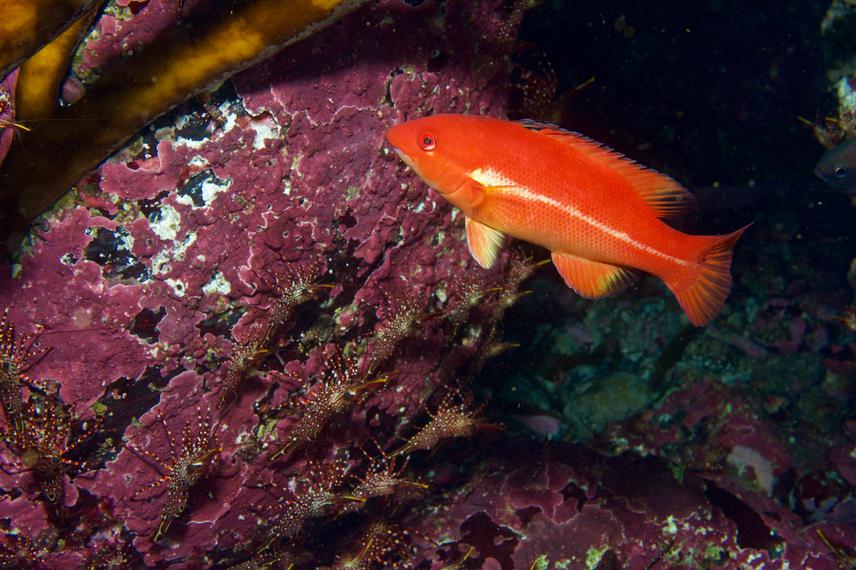Italo Fernández Cisternas
The goal of the work is to use molecular techniques to determine the impact of fisheries on the populations of the Darwin´s sheephead in heavily coastal zones off Northern Chile. Our results will provide significant information on the impact of fishing on the genetic structure of an exploited reef fish. Additionally, via the use of molecular and ecological tools our aim is to propose a spatially explicit conservation management plan for this unregulated fishery. Fishing pressure affects populations differently due mainly to two type of factors: the type of fishing, and the natural history of the target species.

Overfishing is becoming a worldwide problematic situation that is being addressed at the sociological level, as well as at the fisheries level. The main concern is to attain sustainability by managing fish stocks in such a way as to provide a maximum yield to fishermen, while keeping fish populations at stable levels (Maximum Sustainable Yield). Little has been done, however, to determine the hidden impact of fishing on fish populations, namely the lowering of genetic diversity of the exploited species. The work proposed here capitalizes on a unique situation. Using molecular tools, we will be able to assess the genetic consequences of such impacts. Therefore we aim to enhance management to unregulated fishery of a marine species in addition with establishing regulation to ensure the protection of a heavily fished wrasse (Semicossphus darwini). We will use molecular techniques to determine the impact of fisheries on genetic structure of the populations of the Darwin’s sheephead in heavily fished coastal zones (Chile).Additionally, via the use of molecular and ecological tools our aim is to propose a spatial conservation for unregulated fishery. The project will be conducted in Northern Chile. A team member will travel from Iquique (18ºS) to Coquimbo (30ºS) collecting samples from different fishing coves, fish markets and talking to different recreational and commercial divers registering description of the fish catch sites. We collect small tissue elements for the genomic trials and photographs to determined sex and length. Additionally, GPS positioning will be recorded of each site.
The type of habitat will be registered at each collecting site. The DNA microsatellites markers obtained on five population will provide three important pieces of information such as:
(a) connectivity, which is relevant to understand if the existing management in Chile (i.e., TURF- Territorial Users Rights for Fishery, this provide fishery closure during small period of time but it is not sustained for fishes) is effective for Darwin’s wrasse population;
(b) estimate of effective population size (Ne), this will allow to evaluate how big the effective population size really is, which is essential to determine the health of a stock; and (c) the demography of the population to understand if the population is growing or shrinking (based on coalescence models).